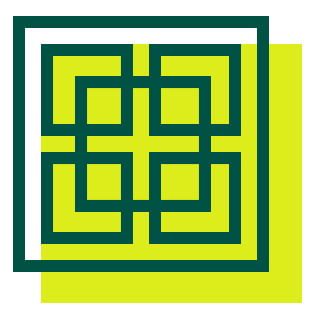
How We Work

Introduction to TEAL
The Teal paradigm defines organizations as being similar to living organisms; components operate automatically and together in concert to sustain overall health. This health includes adapting to change effectively, and it is achieved through enabling employees to bring all of their skills to the organization and doing so without direct leadership. Teal organizations build on a variation of the governance model known as Holacracy.
A Teal organization is defined by three ideals:
1.
S E L F M A N A G E M E N T
Self-management suggests a system based on peer relationships without the need for hierarchy, consent from outside one’s domain, or response to a centralized command.
2.
W H O L E N E S S
Wholeness is about enabling employees to present their full personas rather than just their work personas.
3.
P U R P O S E
Evolutionary Purpose follows a natural path to organizational growth.
Eleventh House as a TEAL organization:
Eleventh House is a cooperative business where every voice is heard. We work with contractors and employees, in the same manner, to bring forward the best possible service to our clients.
If you are a partner, you bring your best service to our shared clients through mutual effort, and you do so in our Teal way.
If you are our client, you receive professional, responsive, and effective service on every project consistently.
Principles of Holocracy —
Roles Instead of Job Descriptions:
The building blocks of Holacracy's organizational structure are roles. Holacracy distinguishes between roles and the people who fill them, as one individual can hold multiple roles at any given time. A role is not a job description; its definition follows a clear format including a name, a purpose, optional "domains" to control, and accountabilities, which are ongoing activities to perform. Roles are defined by each circle—or team—via a collective governance process and are updated regularly in order to adapt to the ever-evolving needs of the organization.
Teal is both a cultural and methodical way of doing business.
Circle Structure
Holacracy structures the various roles of an organization into a system of self-organizing (but not self-directed) circles. Circles are organized hierarchically, and each circle is assigned a clear purpose and accountabilities by its broader circle. However, each circle has the authority to self-organize internally to best achieve its goals. Circles conduct their own governance meetings, assign members to fill roles, and take responsibility for carrying out work within their domain of authority. Circles are connected by two roles known as "lead link" and "rep link", which sit in the meetings of both their circle and the broader circle to ensure alignment with the broader organization’s mission and strategy.
Governance Process —
Governance Process
Each circle uses a defined governance process to create and regularly update its own roles and policies. Holacracy specifies a structured process known as "integrative decision making" for proposing changes in governance and amending or objecting to proposals. This is not a consensus-based system, not even a consent-based system, but one that integrates relevant input from all parties and ensures that the proposed changes and objections to those changes are anchored in the roles' needs - and through them, the organization's needs - rather than people's preferences or ego.
Operational Process —
Operational Process
Holacracy specifies processes for aligning teams according to operational needs and requires that each member of a circle fulfill certain duties in order to work efficiently and effectively together. In contrast to the governance process, which is collective and integrative, each member filling a role operationally has a lot of autonomy and authority to make decisions on how to best achieve his or her goals.
Some have described the authority paradigm in Holacracy as completely opposite to the one of the traditional management hierarchy; instead of needing permission to act or innovate, Holacracy gives blanket authority to take any action needed to perform the work of the roles, unless it is restricted via policies in governance or it involves spending some assets of the organization (money, intellectual property, etc.). Holacracy is thus highly biased toward action and innovation: it defaults to autonomy and freedom, then uses internal processes to limit autonomy when its use in a specific way becomes detrimental.
Connection + Collaboration
Connection & Collaboration Holacracy specifies a tactical meeting process that every circle goes through, usually on a weekly basis. This process includes different phases to report on relevant data, share updates on projects, and open discussions where any circle member can add to the agenda. A particular feature of this last phase, known as "triage", is to focus discussions on the concrete next steps needed by the individual who added the agenda item to address his or her issue. The intention is to avoid large, unproductive discussions dominated by the loudest voices.
Let’s work together!
At Eleventh House, we help you serve the community, so contact us today to get your next program or project started!

